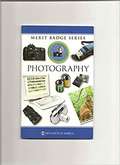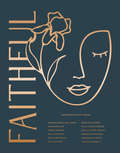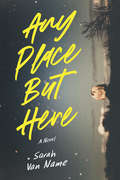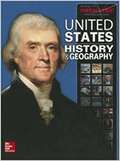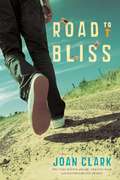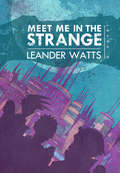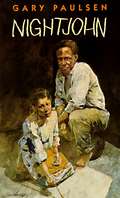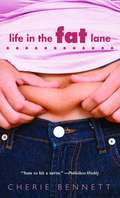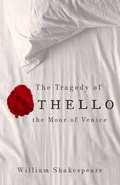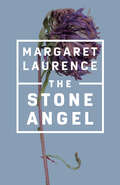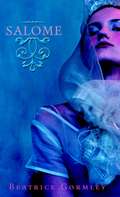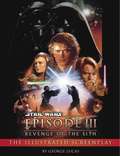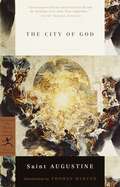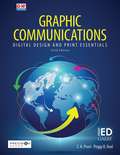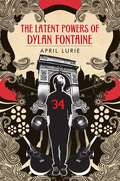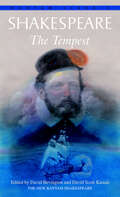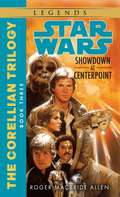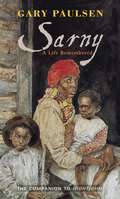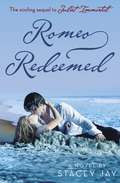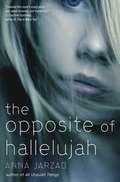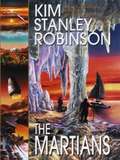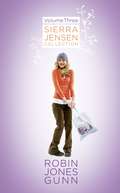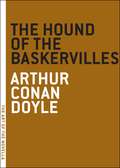- Table View
- List View
Photography (Merit Badge Series)
by Boy Scouts of America StaffOutlines requirements for pursuing a merit badge in photography and examines such topics as making good photographs, cameras and how they work, film versus digital, telling stories with pictures, illustrating a topic or theme with pictures, a career in photography, and photography resources.
Faithful: A Study On The Life Of Joseph
by Sally Lloyd-Jones Lisa Harper Ginny Owens Kelly Minter Ann Voskamp Trillia Newbell Kelly Needham Ruth Chou Simons Amanda Bible Williams Raechel Myers Sarah MacIntosh Savannah LockeAs they examine the stories of incredible women of the Bible, readers will find hope, encouragement, and a strong sense of community in this beautiful, eclectic collection of writing, photos, and lyrics that reflect God&’s faithfulness. Bringing together some of the most beloved Christian authors and songwriters of today, Faithful guides readers through the pages of Scripture to increase understanding of how God has always valued the integral role of females and how that shapes the lives of women today. The Faithful project is a collaboration between three major ministry partners: David C Cook, Integrity Music, and Compassion International. The accompanying album and a 2021 tour of live events celebrates the contributions of women while recognizing their empowerment through the faithfulness of God. This beautiful, creative book will invite readers to return again and again for reflection and inspiration through guided scripture reading and writing prompts.
Literature: The American Experience
by Prentice HallA complete literature program offering traditional and contemporary literary selections with study aids. For presenting the literature of the United States in a historical context.
Any Place But Here
by Sarah Van NameFans of Morgan Matson and Sarah Dessen will fall in love with this contemporary coming of age story set at a picturesque Virginia boarding school.That's what Jess was to me. I was the ground; she was the rain. I wasn't anything until she woke me up.Seventeen-year-old June is completely wrapped up in her best friend Jess. The two are inseparable and June feels so lucky that they found each other. Even if everyone else around her thinks Jess is a bad influence. Even if June is starting to question if she likes Jess as more than just a friend.But after June is expelled from school at the end of her first semester of junior year, she's forced to move to Virginia, to live with her grandmother and attend an all-girls boarding school. She'll be miles away from her home, from her family, and from Jess.June is miserable at first and counts down the days until she can come back home for the summer. But when she befriends two new girls and meets a boy named Sam, who she is instantly drawn to, life in Virginia starts to feel more real. Except Jess is always on her mind, and she can't deny her feelings anymore, even as Jess starts to pull away from her.June can't let Jess go—but she needs to figure out how to move forward, and how to find the place she really belongs.Perfect for readers who like:Teen boarding school romanceLGBTQ books for teensRealistic fiction books for teens 14-18Also by Sarah Van Name:The Goodbye Summer
United States History And Geography (United States History)
by McGraw HillFocus on the big ideas with an accessible print student text built around Essential Questions, enduring ideas, and NCSS Standards. Puts students in the middle of the action with The Story Matters chapter openers, Biography features, maps, and timelines. The Reading Help Desk in each lesson assists students with reading strategies, note-taking activities, graphic organizers, and vocabulary support. Features such as Thinking Like a Historian, It Matters Because, What Do You Think, and Connections to Today help build critical thinking and historical analysis skills.
Road to Bliss
by Joan ClarkSet against the vividly described Prairies in the heart of a cloistered religious sect, this is a gripping novel from a beloved Canadian author.Fifteen-year-old Jim Hobbs, alienated from life in Toronto, hitchhikes to the Prairies on a whim, where he finds shelter in an abandoned farmhouse. There, he encounters his neighbours, members of Majestic Farm, a group that abides by an old-fashioned, ultra-conservative set of rules enforced by their ruthless pastor. When Miriam, one of the pastor's daughters, secretly befriends Jim, they must hide their blossoming love for one another -- or face terrifying consequences. In helping Miriam to escape her religious imprisonment on the farm, Jim must risk everything.From the Trade Paperback edition.
Meet Me in the Strange
by Leander Watts2019 IPPY SILVER MEDALIST - YOUNG ADULTMeet Me in the Strange is an intoxicating adventure set in a glittery, retro-futuristic world of glam rock, spectral aliens, and gender-bendy teens. Davi is mesmerized by a girl at a concert, who appears to lose herself in the power of the otherworldy music of Django Conn. Later, through a chance meeting, Davi becomes friends with the girl, Anna Z. She is like no one Davi has ever met: she loves to talk, talk, talk and has grandiose theories of the next evolution of humans and a strange phenomenon she calls the "Alien Drift."But danger lurks around every corner, because Anna Z is on the run, and her cruel and controlling older brother is determined to find her, at any cost. Davi faces a daunting decision, go on living a safe existence at the magical Angelus Hotel, which has been in the family for generations, or help Anna Z escape her troubled past. When the two take off to follow the concert tour of their glam-rock idol, Django Conn, Davi and Anna Z will face the biggest threat of their young lives.
Nightjohn (Sarny)
by Gary Paulsen"To know things, for us to know things, is bad for them. We get to wanting and when we get to wanting it's bad for them. They thinks we want what they got . . . . That's why they don't want us reading." -- Nightjohn"I didn't know what letters was, not what they meant, but I thought it might be something I wanted to know. To learn."--SarnySarny, a female slave at the Waller plantation, first sees Nightjohn when he is brought there with a rope around his neck, his body covered in scars.He had escaped north to freedom, but he came back--came back to teach reading. Knowing that the penalty for reading is dismemberment Nightjohn still retumed to slavery to teach others how to read. And twelve-year-old Sarny is willing to take the risk to learn.Set in the 1850s, Gary Paulsen's groundbreaking new novel is unlike anything else the award-winning author has written. It is a meticulously researched, historically accurate, and artistically crafted portrayal of a grim time in our nation's past, brought to light through the personal history of two unforgettable characters.From the Hardcover edition.
Life in the Fat Lane
by Cherie BennettTHERE'S A PERFECT GIRL at every school, yours included. You know her. Beautiful. Talented. Smart. Great parents. Cool boyfriend. You can't even hate her, because, of course, she's so nice.At Forest Hills High, Lara Ardeche is that girl.But things can change."Skillfully drawn, resulting in a compelling story. . . . An enjoyable and thought-provoking read."--School Library Journal"Readers will be totally caught up in Lara's struggle to find her true self under all that weight."--BooklistAn ALA Best Books for Young AdultsFrom the Hardcover edition.
Othello: Large Print
by William ShakespeareThis GoReader comes preloaded with 1 audiobook title: Othello. Every student should be given the gift of reading and understanding some of the greatest literature ever writtenand now they can, with Unabridged Classics, each audiobook pre-loaded onto an individual GoReader device.
The Stone Angel (New Canadian Library)
by Adele Wiseman Margaret LaurenceThe film adaptation of Margaret Laurence's The Stone Angel, starring acclaimed actresses Ellen Burstyn and Ellen Page, and introducing Christine Horne, opens in theatres May 9, 2008.This special fortieth-anniversary edition of Margaret Laurence's most celebrated novel will introduce readers again to one of the most memorable characters in Canadian fiction. Hagar Shipley is stubborn, querulous, self-reliant, and, at ninety, with her life nearly behind her, she makes a bold last step towards freedom and independence.As her story unfolds, we are drawn into her past. We meet Hagar as a young girl growing up in a black prairie town; as the wife of a virile but unsuccessful farmer with whom her marriage was stormy; as a mother who dominates her younger son; and, finally, as an old woman isolated by an uncompromising pride and by the stern virtues she has inherited from her pioneer ancestors.Vivid, evocative, moving, The Stone Angel celebrates the triumph of the spirit, and reveals Margaret Laurence at the height of her powers as a writer of extraordinary craft and profound insight into the workings of the human heart.From the Trade Paperback edition.
Salome
by Beatrice GormleyIf I'd never hoped to live in a world of goodness and truth—if the priestess of Diana, then Leander, and Joanna, hadn't shown me glimpses of it—maybe I wouldn't have minded being shut out of it. Maybe the preacher's death wouldn't have trapped me in a dungeon, the dungeon of my own self. Her name is Salome. You may think you know her story—how her seductive Dance of the Seven Veils led to the beheading of John the Baptist. But you don't know it from her side. You don't know how a web of betrayal, and greed, and desire was spun around an innocent teenage girl. How she came to doubt her own mother. How she searched for a friend in an unfamiliar land. And how she walked into a trap that changed the course of history. This is Salome's story, in her own words. Listen, and learn of strength, of power, of loyalty—and of death. From the Hardcover edition.
Star Wars: Episode III Revenge of the Sith -- The Illustrated Screenplay (Star Wars - Legends #No. 2)
by George LucasEPISODE III-THE ONE AND ONLY OFFICIAL SCREENPLAY, available exclusively in ebook format, including scenes that did not appear in the movie itself! This is the complete, final screenplay written by George Lucas, as brought to life before the cameras by a stellar cast of performers and an unparalleled team of special effects wizards. Enjoy a rare and fascinating director's-eye-view of all the action, all the legendary characters, and each of the exotic worlds from science fiction cinema's greatest saga, as it comes full circle. And thanks to the images from the final cut of the movie itself, you'll be able to visualize the adventure as it unfolded throughout the shooting of Star Wars: Episode III: Revenge of the Sith. For the total Star Wars fan and filmmaking enthusiast alike, this extraordinary ebook is an essential part of the Star Wars experience. Features a bonus section following the novel that includes a primer on the Star Wars expanded universe, and over half a dozen excerpts from some of the most popular Star Wars books of the last thirty years!
The City of God: A Christian Classic Work By St. Augustine Of Hippo (Modern Library Classics)
by Saint AugustineWritten in the early 5th century by Augustine of Hippo, who later became a Doctor of the Church, this large theological work provided an articulate defense of Christianity when it was being held culpable for the shocking sack of Rome that had occurred just a few years before. It outlines a citizenship that goes beyond the worldly, the political, and the self-centered, instead focusing on a place where the inhabitants are devout, God-focused, and seeking grace. In examining history with a clear perception of good and evil, Augustine was in effect interpreting human actions in relation to eternity. He contrasts earthly and heavenly cities to great effect, in addition to inspecting pagan religions, Greek philosophers like Plato, and the Bible. Just as it influenced the people of the author's own time, "The City of God" is still a powerful Christian text to this day and considered a foundational work of Christianity.
Graphic Communications: Digital Design And Print Essentials
by Z. A. Prust Peggy B. DealNIMAC-sourced textbook
The Latent Powers of Dylan Fontaine
by April LurieA MOTHER WHO split for another man. A father who works 24/7. An older brother who excels at everything--and smokes a lot of weed. A best friend, of the feminine persuasion, who only wants to be a friend, and who's shooting a film set in cool Greenwich Village, New York. Dylan Fontaine's life seems to be full of drama he can't control. But when he stars in his best friend's movie, Dylan discovers that, sometimes, life's big shake-ups force you to take risks--and to step into the spotlight.
The Tempest
by William ShakespearePlot synopsis of this classic is made meaningful with analysis and quotes by noted literary critics, summaries of the work's main themes and characters, a sketch of the author's life and times, a bibliography, suggested test questions, and ideas for essays and term papers.
Showdown at Centerpoint: Star Wars (The Corellian Trilogy) (Star Wars: The Corellian Trilogy - Legends #3)
by Roger Macbride AllenIn this third and final volume of the Corellian trilogy, Han and Luke lead the Alliance in a mad scramble against the Selonian rebels for control of the planetary technology. Features a bonus section following the novel that includes a primer on the Star Wars expanded universe, and over half a dozen excerpts from some of the most popular Star Wars books of the last thirty years!
Sarny: A Life Remembered (Sarny)
by Gary PaulsenSo many readers have written and asked: What happened to Sarny, the young slave girl who learned to read in Nightjohn? Extraordinary things happened to her, from the moment she fled the plantation in the last days of the Civil War, suddenly a free woman in search of her sold-away children, until she found them and began a new life. Sarny's story gives a panoramic view of America in a time of trial, tragedy, and hoped-for change, until her last days in the 1930s.
Romeo Redeemed (Juliet Immortal)
by Stacey JayCursed to live out eternity in his rotted corpse, Romeo, known for his ruthless, cutthroat ways, is given the chance to redeem himself by traveling back in time to save the life of Ariel Dragland. Unbeknownst to her, Ariel is important to both the evil Mercenaries and the love-promoting Ambassadors and holds the fate of the world in her hands. Romeo must win her heart and make her believe in love, turning her away from her darker potential before his work is discovered by the Mercenaries. While his seduction begins as yet another lie, it soon becomes his only truth. Romeo vows to protect Ariel from harm, and do whatever it takes to win her heart and soul. But when Ariel is led to believe his love is a deception, she becomes vulnerable to Mercenary manipulation, and her own inner darkness may ultimately rip them apart.
The Opposite of Hallelujah
by Anna JarzabCaro Mitchell considers herself an only child--and she likes it that way. After all, her much older sister, Hannah, left home eight years ago, and Caro barely remembers her. So when Caro's parents drop the bombshell news that Hannah is returning to live with them, Caro feels as if an interloper is crashing her family. To her, Hannah's a total stranger, someone who haunts their home with her meek and withdrawn presence, and who refuses to talk about her life and why she went away. Caro can't understand why her parents cut Hannah so much slack, and why they're not pushing for answers. Unable to understand Hannah, Caro resorts to telling lies about her mysterious reappearance. But when those lies alienate her new boyfriend, friends, and put her on the outs with her parents, Caro seeks solace from an unexpected source. And as she unearths a clue from Hannah's past--one that could save Hannah from the dark secret that possesses her--Caro begins to see her sister in a whole new light.
The Martians (Mars Trilogy)
by Kim Stanley RobinsonKim Stanley Robinson's Mars trilogy is one of science fiction's most honored series, with Red Mars winning the distinguished Nebula Award, and both Green Mars and Blue Mars honored with the Hugo. A modern-day classic of the genre, this epic saga deftly portrays the human stories behind Earth's most ambitious project yet: the terraforming of Mars.Now, following the publication of his acclaimed adventure novel, Antarctica, Robinson returns to the realm he has made his own, in a work that brilliantly weaves together a futuristic setting with a poetic vision of the human spirit engaged in a drama as ancient as mankind itself.From a training mission in Antarctica to blistering sandstorms sweeping through labyrinths of barren canyons, the interwoven stories of The Martians set in motion a sprawling cast of characters upon the surface of Mars. As the planet is transformed from an unexplored and forbidding terrain to a troubled image of a re-created Earth, we meet men and women who are bound together by their experiences on Mars and with each other.Among them are Michel, a French psychologist dazzled by the beauty around him; Maya, a woman whose ill-fated love affairs lead to her first voyage to Mars; and Roger, a tall Martian-born guide who lacks social skills but has the courage to survive on the planet's dangerous yet strangely compelling surface.Beginning with the First Hundred explorers, generations of friends, enemies, and lovers are swept up in the drama that is Earth's tenuous toehold on Mars. International exploration turns into world building; world building degenerates into political conflict, revolution, and war.Following the strands of these lives and events, in an age when human life has been extended for decades, The Martians becomes the story of generations lived on the edge of the ultimate frontier, in a landscape of constant man-made and natural transformation.This new masterpiece by Kim Stanley Robinson is a story of hope and disappointment, of fierce physical and psychological struggles. Both deeply human and scientifically cutting edge, The Martians is the epic chronicle of a planet that represents one of humanity's most glorious possibilities.A Letter from Kim Stanley Robinson:"When I finished Blue Mars, I realized I wasn't done with Mars yet. There were things I still wanted to say about the place, and about my characters from the trilogy, and there were a number of sidebar stories and characters that had found no place in the trilogy's structure. I also had a couple of precursor Mars stories that did not fit the trilogy's history--'Exploring Fossil Canyon' and 'Green Mars'--and I had held these out of my earlier story collections thinking they belonged with the Mars group."So all this material was there, and as I wrote Antarctica, I found myself drawn back into the matter of Mars repeatedly, by the discovery of possible life in meteorite AHL8004 and by the Pathfinder landing. I decided to make a collection of Martian tales, and as I put them in roughly chronological order, I saw that they seemed to be adding up to their own larger story, functioning as the trilogy's 'unconscious' or 'secret history'. Using all kinds of modes, from folk tales to scientific articles, from personal accounts to the full text of a constitution, I arranged things so that the book altogether tells the story of an underground and hard-to-see resistance to the terraforming described in the trilogy proper. I had a great time doing these stories, and hope they add up to my own version of a Martian Chronicles."From the Paperback edition.
Sierra Jensen Collection, Vol 3 (Sierra Jensen Collection #Bks. 1-3)
by Robin Jones GunnChristy Miller knows a good friend when she meets her, and so will you--Sierra Jensen is at it again! Open Your Heart: What an adventure! Having Christy Miller invite Sierra on an all-expenses-paid trip to Europe was amazing--but that was just the beginning. Sierra never imagined she'd meet someone like Alex, a dark-eyed Russian college student who's a Christian. Or that they'd all come face-to-face with disaster. Through it all, one question haunts Sierra: can she learn to love others without expecting anything in return? Will she finally be able to open her heart to others--and to God? Time Will Tell: Sierra's senior year of high school is here, but after the great summer she just had, how can it be anything but a letdown? Sure enough, the year tanks big-time when the school issues her buddy Randy an ultimatum. Stuck in the middle--Sierra wonders, what's right? Her friend or the rules? She longs to talk it over with Amy, but Sierra's best friend still isn't talking to her. What's worse, she hasn't heard a word from Paul! No doubt about it, this school year is totally frustrating! Will Sierra ever understand her friendships or God's plans for them? Now Picture This : Why can't everyone just leave Sierra alone? All she wants to do is find a place to read the letter she just received from Paul--to soak in every word and memorize the photo he sent her--but Thanksgiving at the Jensen house means relatives everywhere! Sierra hides out, immersed in her ideas for Paul's birthday and Christmas gifts, especially his requested gift: a photo of her. Sierra's determined--the photo has to be spectacular! But a small voice of doubt nags at her. What does God think of her ignoring her family and friends this way? Is her picture-perfect relationship with Paul really all she thinks it is?
The Hound of the Baskervilles (The Art of the Novella)
by Sir Arthur Conan Doyle"It's an ugly business, Watson, an ugly dangerous business, and the more I see of it the less I like it."Sherlock Holmes had been dead for eight years--killed of in another story--when Arthur Conan Doyle decided to bring the famous detective back for a new story that he told friends was turning into "a real creeper". The tale about the chilling re-animation of a curse haunting the Baskerville family since Medieval times, wherein a supernatural beast stalks the gloomy moors, would be the most sensationally successful of all the Holmes stories, and a century later, it is still the most thrilling of them all. Full of moody atmospherics, suspicious characters, and dramatic discoveries, The Hound of the Baskervilles also shows off something often overlooked about Doyle: his wonderful prose. Presented here as it first appeared in The Strand magazine in 1901, this great mystery still strikes many as the best ever written. The Art of The Novella Series Too short to be a novel, too long to be a short story, the novella is generally unrecognized by academics and publishers. Nonetheless, it is a form beloved and practiced by literature's greatest writers. In the Art Of The Novella series, Melville House celebrates this renegade art form and its practitioners with titles that are, in many instances, presented in book form for the first time.
The Nannies: Friends with Benefits
by Melody MayerPoor girls.Lydia is not used to working for her money. But having money? She's used to that--and lots of it. Now that she's in La-La Land, Lydia will do whatever it takes to maintain the L.A. lifestyle she was born to have. If it means she has to tell a few little lies to get there, well, a Hollywood girl's gotta do what a Hollywood girl's gotta do, right?Rich Boys.Being with Jonathan is playing with fuego. Everything about him spells trouble for Esme, from his trendy hybrid car to his expensive clothes to his so-called ex, Mackenzie. What's worse is it seems that he wants to keep Esme hidden away, a secret. Doesn't a guy who likes you want to show you off? Unless you're just being used.Richer Girls.Anyone who's anyone will be at Fab, the exclusive party that wraps up L.A.'s fashion week. That's why Platinum--neurotic music superstar and Kiley's new boss--is desperate to snag an invite. Kiley has the unlikely power to make it happen . . . or say good-bye to her California summer.From the Trade Paperback edition.
